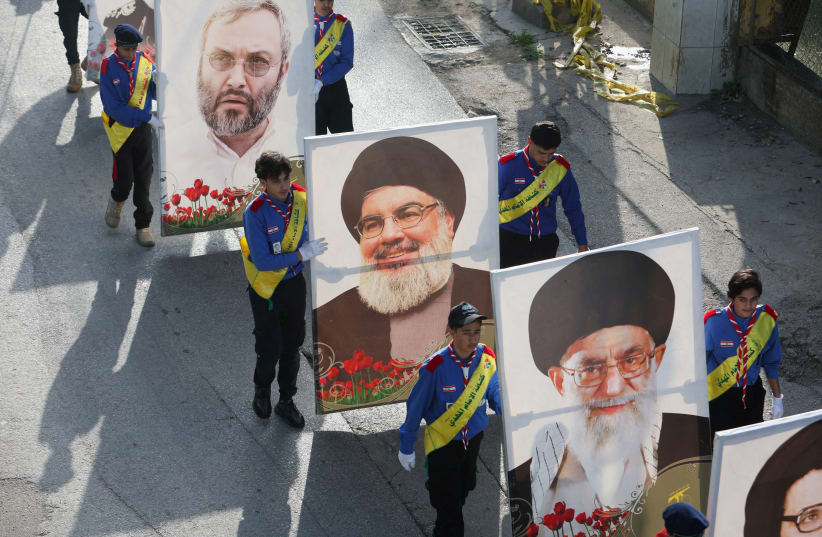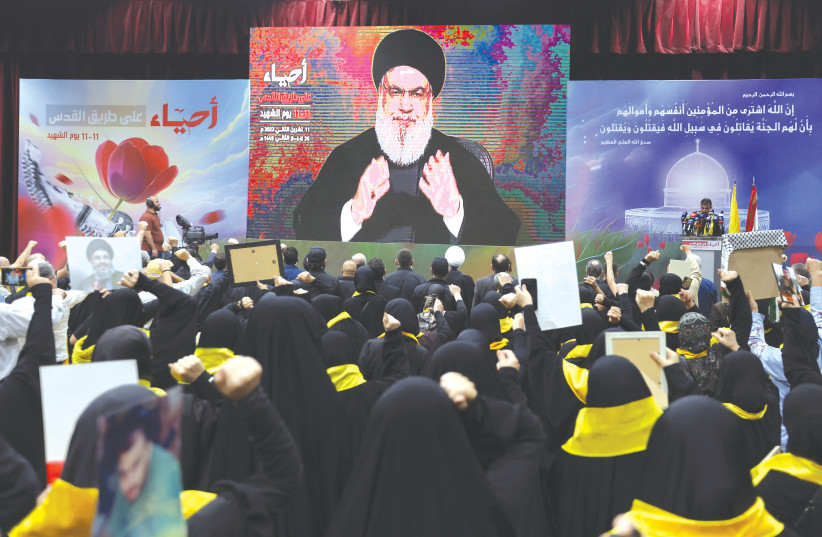Israel is now focused on the threat from Hezbollah, which has fired more than 2,000 rockets and dozens of anti-tank guided missiles and drones at Israel from October 8 to January 9.
The Hezbollah threat is also changing.
The group has embedded itself within communities in southern Lebanon over several decades. It has built tunnels and bunkers, and has built observation posts.
On February 3, IDF spokesperson R.-Adm. Daniel Hagari delivered an extensive assessment of the Hezbollah threat. The data he provided and other data underscore the issues facing northern Israel.
First of all, Israel has evacuated 80,000 residents of communities along the northern border, and both Defense Minister Yoav Gallant and Chief of Staff Lt.-Gen. Herzi HaLevi warned in late January that the likelihood of conflict had increased.
The ministry director-general also visited the north last week and detailed the damage caused to some 430 homes on the border by Hezbollah attacks.
Hagari said on February 3 that three IDF divisions deployed along the border have responded with defensive and offensive operations. Over 3,400 Hezbollah targets have been struck, and 200 terrorists targeted, with 150 terror cells struck and 120 Hezbollah observation posts hit.
Forty weapon stores have been struck along with 40 “command and control” centers.
Israel has focused on the increasing drone threat. It has also focused on preventing weapons from reaching Hezbollah via Syria.
Much of the IDF campaign has been known through IDF statements about daily retaliatory strikes on Hezbollah. The real question now is how Hezbollah may shift forces, whether its capabilities have been degraded, and how it may respond.
The Hezbollah threat was always believed to be much more serious than the underestimated Hamas threat before October 7. After October 7, this led to many questions about whether Hezbollah had been underestimated as well.
It may be that Hamas was able to exploit an opportunity to achieve its brutal attack and that Hezbollah faces challenges Hamas did not face, for instance, the hilly terrain in northern Israel, which will prevent Hezbollah from launching the kind of human wave attacks that Hamas did.
Nevertheless, the Hezbollah threat is clear. It has carried out near-daily attacks on Israel but did not choose to join a total war in support of Hamas. Instead it was operationalized by Iran to conduct smaller attacks and to “normalize” them.
Prior to October 7, Israel would never have permitted Hezbollah to fire 2,000 rockets at Israel without incurring a major conflict. However, the desire to focus on defeating Hamas provided some cover for Hezbollah to change the paradigm in the north. The goal is to now shift that paradigm back. The Hamas massacre has also changed the feeling people in Israel have about seeing Hezbollah on the border. Now, it is understood that when terror groups openly parade on the border, it can be a prelude to the massacre.
Hezbollah was already pushing the envelope in 2022 and 2023. It had threatened Israel during the maritime negotiations between Israel and Lebanon, which took place on the eve of the last Israeli election in 2022. In addition, Hezbollah began to try to shift the border at Mount Dov, where it set up a tent.
Hezbollah's provocation tests Israel
This provocation was designed to see if it could create “facts on the ground”, to see how Israel would respond. In general Hezbollah continued to provoke up until October 8 when its attacks began. Its attacks have provided Israel a right to respond.
There are several aspects of the Hezbollah threat that are now in focus. First, the Hezbollah drone threat has increased. The group has used an unprecedented number of drones since October 8 to threaten Israel. These have set off sirens to sound in numerous communities. Hezbollah has also sought to target sensitive sites in the north with drones or missiles.
Hezbollah may have over-reached. If it is not interested in a larger war, then it has become “too big to fail” in the sense that it carpeted southern Lebanon with too much terrorist infrastructure, creating many potential targets and leaving itself exposed.
The large number of targets Israel has struck is important, but it is unclear what percentage of the total they reflect. About 3,000 Hezbollah attacks are similar to the number of Israeli retaliatory strikes.
Is this a new version of the Cold War concept of “mutually assured destruction” doctrine where neither side wants to escalate too much? On the other hand Hezbollah has changed the rules of engagement in the north, since 2006.
Israel, which already waged a decade-long Campaign Between the Wars against Iranian entrenchment in Syria and its support for Hezbollah, now faces diminishing returns in a cycle of conflict with Hezbollah. For instance, the first 3,400 targets struck may have been important, but what is the potential for the next 3,400?\
These are all key questions now as the Gaza war passes its depressing four-month anniversary. Back during Passover 2023, there was a rocket barrage from Lebanon. This was considered a big deal then. Now, the communities targeted near Shlomi have been evacuated.
At the time, the radio talked about the “cycle” of violence, and I heard someone shout that it’s not a “cycle,” rather Hezbollah leader Hassan Nasrallah had started it. Indeed, Hezbollah started this round as well. Hezbollah, like Hamas, seeks the initiative. The challenge is to take that initiative from their hands.

